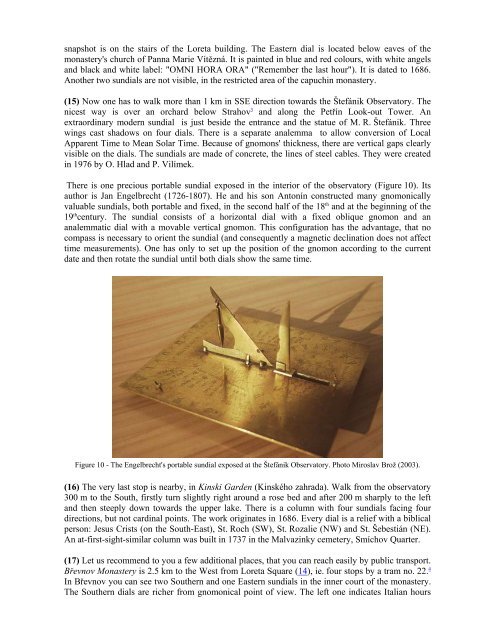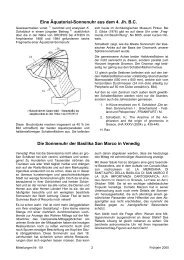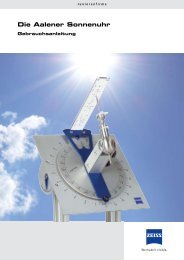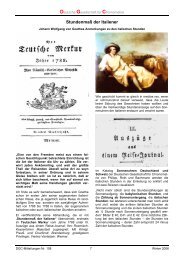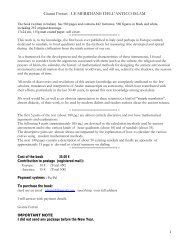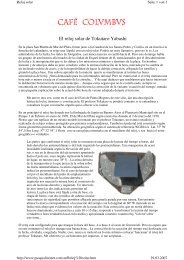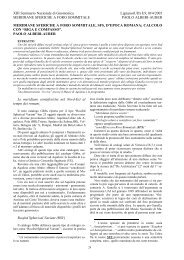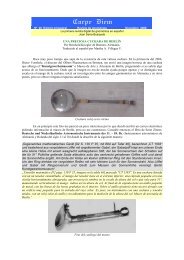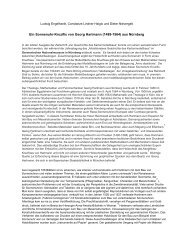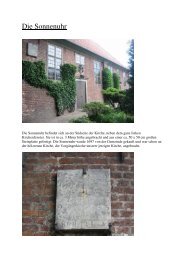International Gnomonic Bulletin - Gnomonica by Nicola Severino
International Gnomonic Bulletin - Gnomonica by Nicola Severino
International Gnomonic Bulletin - Gnomonica by Nicola Severino
You also want an ePaper? Increase the reach of your titles
YUMPU automatically turns print PDFs into web optimized ePapers that Google loves.
snapshot is on the stairs of the Loreta building. The Eastern dial is located below eaves of the<br />
monastery's church of Panna Marie Vítězná. It is painted in blue and red colours, with white angels<br />
and black and white label: "OMNI HORA ORA" ("Remember the last hour"). It is dated to 1686.<br />
Another two sundials are not visible, in the restricted area of the capuchin monastery.<br />
(15) Now one has to walk more than 1 km in SSE direction towards the Štefánik Observatory. The<br />
nicest way is over an orchard below Strahov 3 and along the Petřín Look-out Tower. An<br />
extraordinary modern sundial is just beside the entrance and the statue of M. R. Štefánik. Three<br />
wings cast shadows on four dials. There is a separate analemma to allow conversion of Local<br />
Apparent Time to Mean Solar Time. Because of gnomons' thickness, there are vertical gaps clearly<br />
visible on the dials. The sundials are made of concrete, the lines of steel cables. They were created<br />
in 1976 <strong>by</strong> O. Hlad and P. Vilímek.<br />
There is one precious portable sundial exposed in the interior of the observatory (Figure 10). Its<br />
author is Jan Engelbrecht (1726-1807). He and his son Antonín constructed many gnomonically<br />
valuable sundials, both portable and fixed, in the second half of the 18 th and at the beginning of the<br />
19 th century. The sundial consists of a horizontal dial with a fixed oblique gnomon and an<br />
analemmatic dial with a movable vertical gnomon. This configuration has the advantage, that no<br />
compass is necessary to orient the sundial (and consequently a magnetic declination does not affect<br />
time measurements). One has only to set up the position of the gnomon according to the current<br />
date and then rotate the sundial until both dials show the same time.<br />
Figure 10 - The Engelbrecht's portable sundial exposed at the Štefánik Observatory. Photo Miroslav Brož (2003).<br />
(16) The very last stop is near<strong>by</strong>, in Kinski Garden (Kinského zahrada). Walk from the observatory<br />
300 m to the South, firstly turn slightly right around a rose bed and after 200 m sharply to the left<br />
and then steeply down towards the upper lake. There is a column with four sundials facing four<br />
directions, but not cardinal points. The work originates in 1686. Every dial is a relief with a biblical<br />
person: Jesus Crists (on the South-East), St. Roch (SW), St. Rozalie (NW) and St. Šebestián (NE).<br />
An at-first-sight-similar column was built in 1737 in the Malvazinky cemetery, Smíchov Quarter.<br />
(17) Let us recommend to you a few additional places, that you can reach easily <strong>by</strong> public transport.<br />
Břevnov Monastery is 2.5 km to the West from Loreta Square (14), ie. four stops <strong>by</strong> a tram no. 22. 4<br />
In Břevnov you can see two Southern and one Eastern sundials in the inner court of the monastery.<br />
The Southern dials are richer from gnomonical point of view. The left one indicates Italian hours


